There are moments in the history of the world and mankind that turn the current order upside down. Events that affect the lives of millions of people and many nations. Events that overturn the status quo, erase existing agreements, destroy alliances. Undoubtedly, one of them took place on June 28, 1914 in Bosnia. The attack in Sarajevo changed the fate of Europe.
Murder of Archduke Franz Ferdinand
The murder of the Habsburg archduke Franz Ferdinand and his wife, the Czech aristocrat Zofia von Chotek, upset the balance that had been in place for almost 100 years in the most powerful continent in the world - Europe. It contributed to the outbreak of World War I, and consequently also World War II, which was its natural continuation. As a result of unleashed wars, millions of lives lost their lives on various battle fronts. Dying in the seas, in the air and in muddy trenches. Never before in human history have so many died for so little while fighting over scraps of earth torn apart by artillery shells. Ultimately, the Great War broke down the very dynasties that had ruled Europe's most powerful states for hundreds of years. The Habsburgs, the Hohenzollerns, the Romanovs fell into disarray ... In turn, their collapse was the breeding ground for the birth of the twentieth-century totalitarian systems - Communism and Fascism, which terror claimed hundreds of millions of innocent lives. Destroyed Europe lost its leading position forever. Europe after June 28, 1914 was never the same as before. But that day no one knew about it yet.
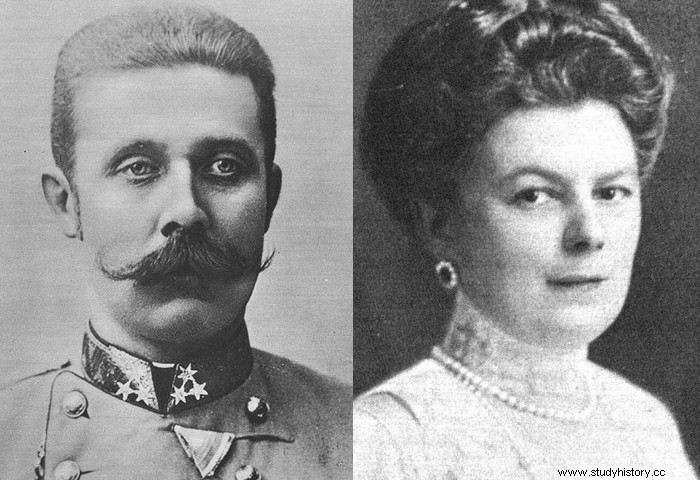
Franciszek Ferdynand and Zofia von Chotek
Irrelevant murder
Everything would have fallen into a logical whole, were it not for the fact that their deaths were so de facto irrelevant. It was merely an incident, only locally important from the point of view of the political games of the multinational Habsburg empire. It was also not something special. Earlier in history, members of European monarchies were killed in attacks or in obscure circumstances. However, none of these prior events led to what the Sarajevo murder had led to. I think the word "excuse" - which is often used on this occasion - is not appropriate here. The events of that August day were just one element in a series of events that made what European nations sincerely wanted for a long time possible. Jump at your throats.
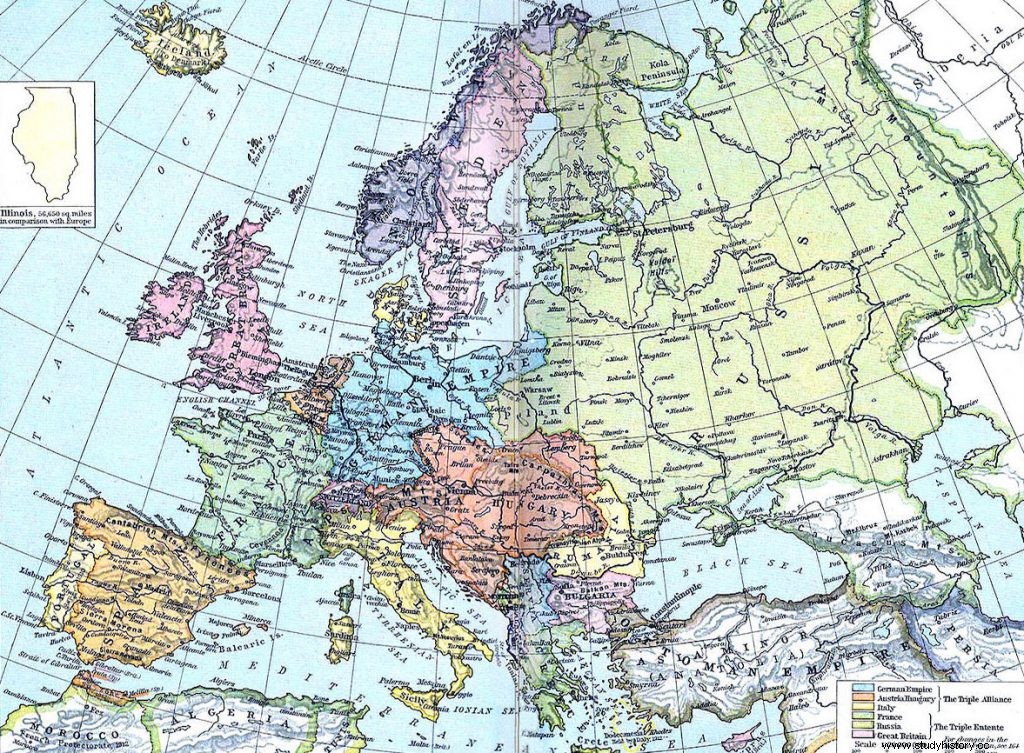
Europe in 1914
June 28, 1914
On that day, the heir to the throne of the Austro-Hungarian Empire, Franz Ferdinand, visited Sarajevo. He traveled with his wife, Zofia. Bosnia was then part of the multinational Habsburg state. Franz Ferdinand ignored the warnings and decided to travel on the Serbian national holiday - St. Greets. In a way, it looked like a provocation, at least in the eyes of neighboring Serbia, in conflict with Austria-Hungary. Already in the morning of that day, the first attempt was made, throwing a bomb towards the Archduke's car, but the explosion did not cause any injuries. So the guests went on to lunch at the town hall.
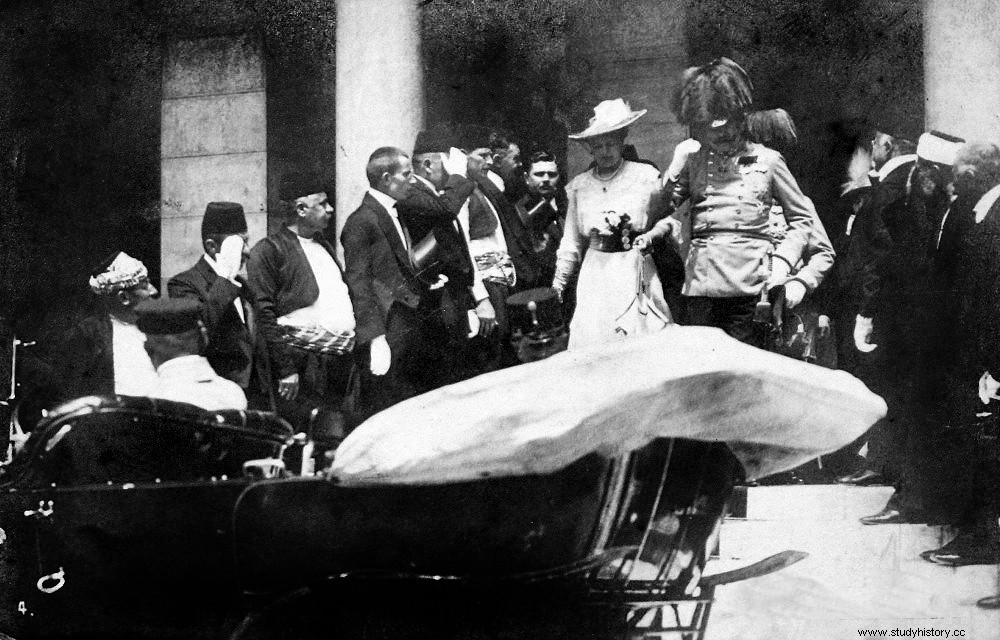
Franciszek Ferdynand and his wife Zofia leave the town hall, 10 minutes later they are murdered - A murder that changed the fate of Europe
The attack in Sarajevo
After returning from the town hall, Franciszek Ferdynand and his wife, Zofia, continued their journey. By an unfortunate coincidence, the chauffeur driving their car mistook the turns and steered the Gräf &Stift limousine straight into the arms of another Serbian conspirator - a young student of Gavrilo Princip. The latter, not wasting the opportunity, fired a series of shots at the imperial couple. Close-range shots proved fatal.
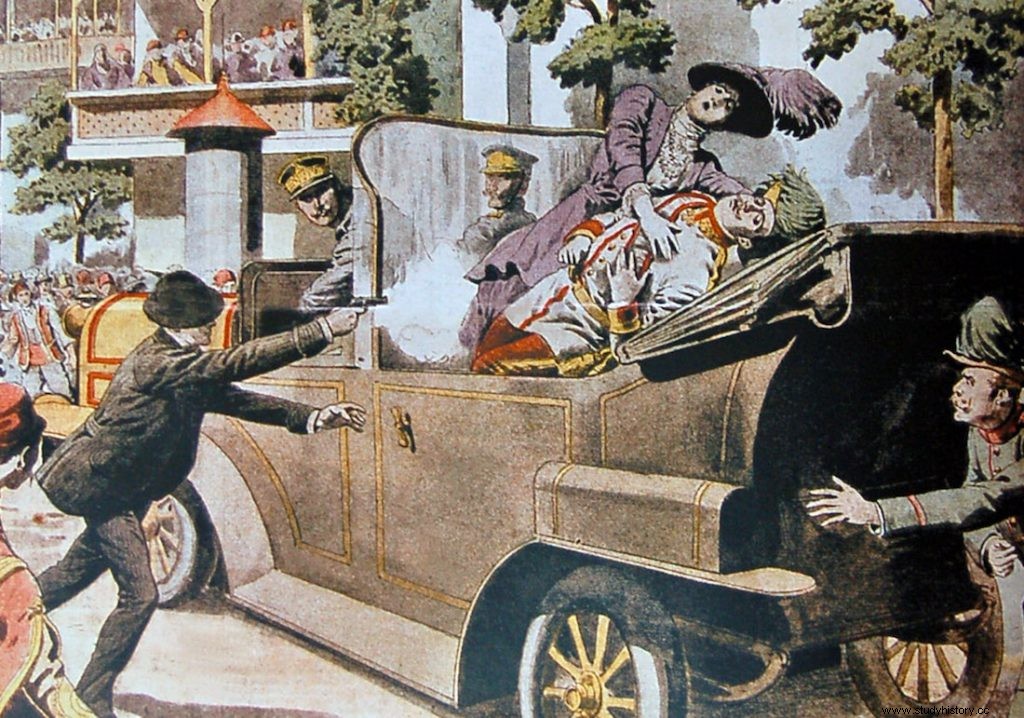
The attack in Sarajevo and the murder of Archduke Franz Ferdinand depicted in the painting
Franciszek managed to whisper:
"Sopherl! Sopherl! Sterbe nicht! Bleibe am Leben für unsere Kinder! ”
(Sophie! Sophie! Don't die! Live for our children!)
But Zofia was already dead. At the time of her death, she was 46 years old. Franciszek later died after several dozen minutes. He was 51 years old.
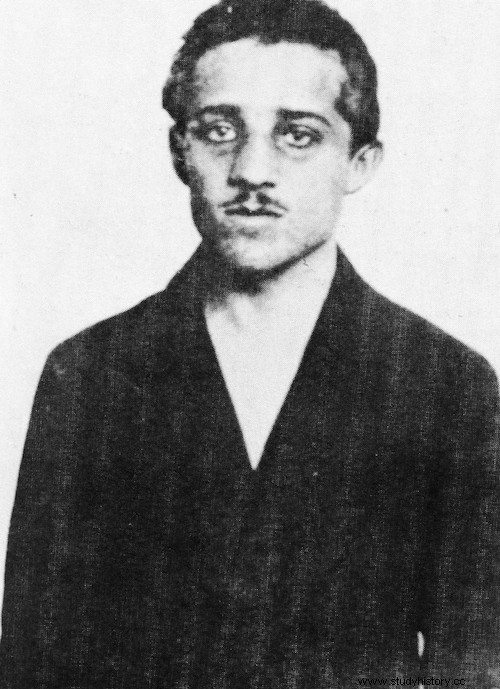
Black Hand bomber, 19-year-old student of Gavrilo Princip
Situation after the attack
The first weeks after the murder of Franz Ferdinand passed quietly. Initially, the somewhat tense situation did not indicate that the attack in Sarajevo could turn into something much more serious. The world press remained indifferent to other matters. The currently reigning Austro-Hungarian Emperor Franz Joseph I took his nephew's death coldly. Franz Ferdinand was not popular because he married a low-born Czech woman. He also became famous as a pedantic sadist fond of hunting wild animals. In his Czech Konopiště Castle, the Archduke kept countless animal trophies. His passion for murdering animals and meticulous preservation of their remains was at least inappropriate, even by royal standards. Apparently, Emperor Franz Joseph was supposed to breathe a sigh of relief after his death and say:
"God does not let fate be challenged," he muttered to his aide, "The highest powers have restored an order that I myself could no longer maintain."
The further fate of the events was in the hands of imprudent diplomacy and arrogant military men. Austria-Hungary issued an appropriate ultimatum against Serbia, which announced a partial mobilization. The worried Russian Empire gave her support, but at the same time the Russians did not consult it with their other allies - France and Great Britain. A month after the coup, Austria-Hungary declared war on Serbia, despite the fact that it fulfilled most of the ultimatum points. In response, Russia began mobilizing its own troops. This, in turn, prompted the German Empire to issue its own ultimatum, first to the Russians and then to France. Both ultimats went unanswered, so the Kaiser declared war on Russia on August 1 and France on August 2. The joining of the war by the German Empire meant that the local conflict turned into a European war. At the same time, German troops crossed the border of Belgium, and this provoked Great Britain, which did not intend to remain passive. The joining of the war by the United Kingdom of Great Britain meant that the European conflict turned into a global war.
Souvenirs from the attack in Sarajevo
Important memorabilia from that fateful event are kept to this day in the Heeresgeschichtliches Museum in Vienna (Military History Museum). They are displayed on a permanent, generally accessible exhibition. The most important and largest of the exhibits is the Gräf &Stift limousine, a model from 1910 with a power of 28 HP. It was in this car that the imperial couple was murdered. There is also the uniform of Archduke Franz Ferdinand with faded traces of blood and clearly visible holes in the left breast. You can also see the Browning brand pistol that Gavrilo Princip used to shoot Fanciszek and Zofia.
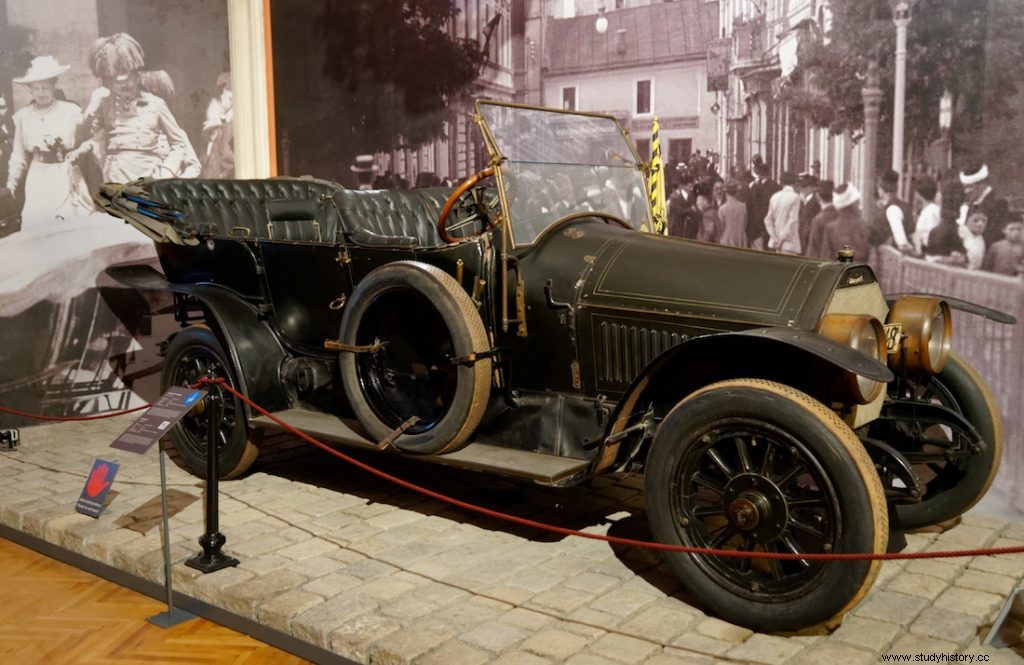
Gräf &Stift limousine - Zamach in Sarajevo
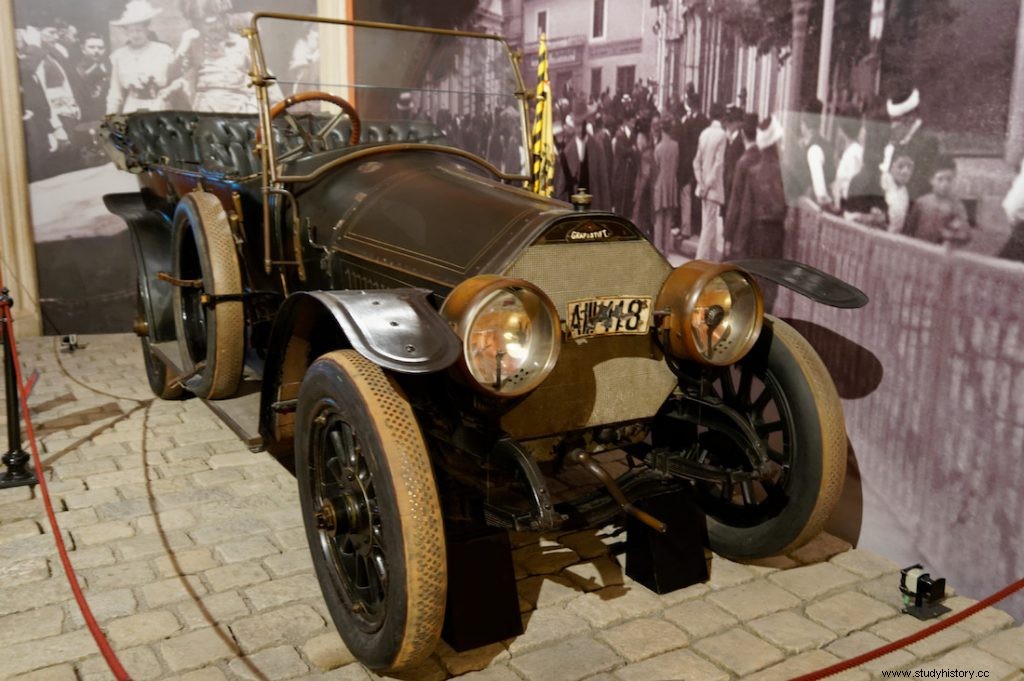
It was in this car that on June 28, 1914, Archduke Franz Ferdinand and his wife Zofia were murdered.
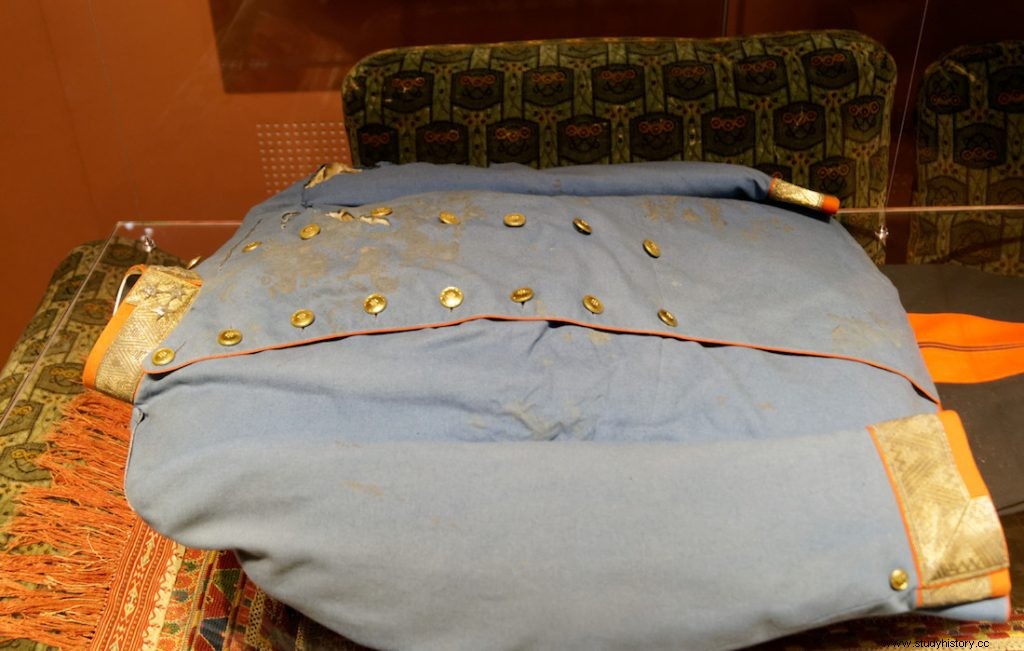
The punctured uniform of Archduke Franz Ferdinand
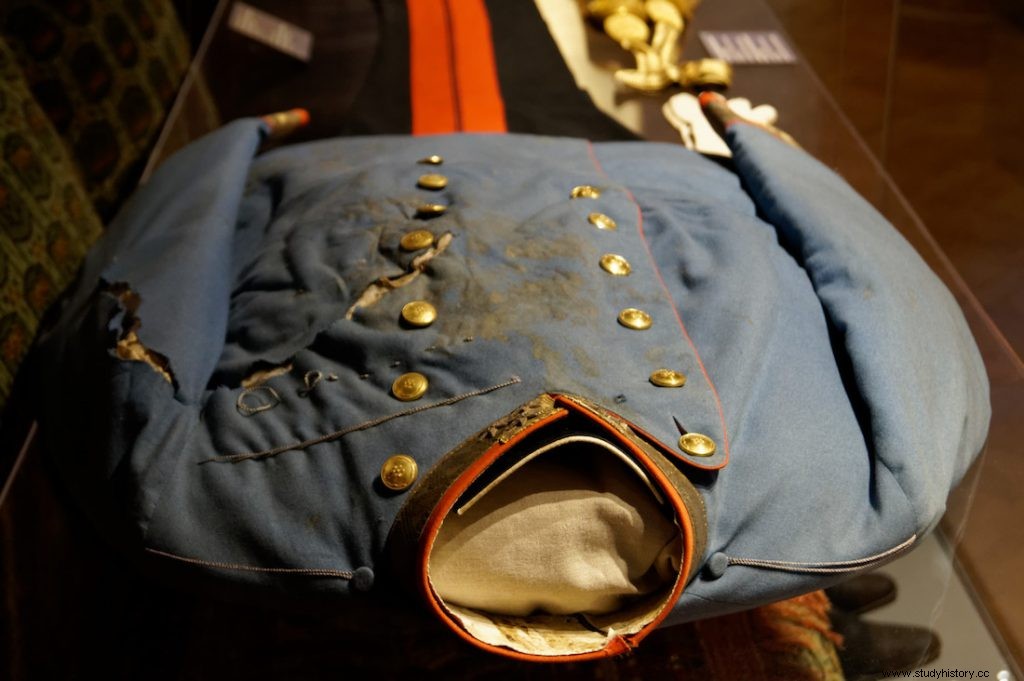
Torn uniform and faded traces of blood - The Murder of Archduke Franz Ferdinand
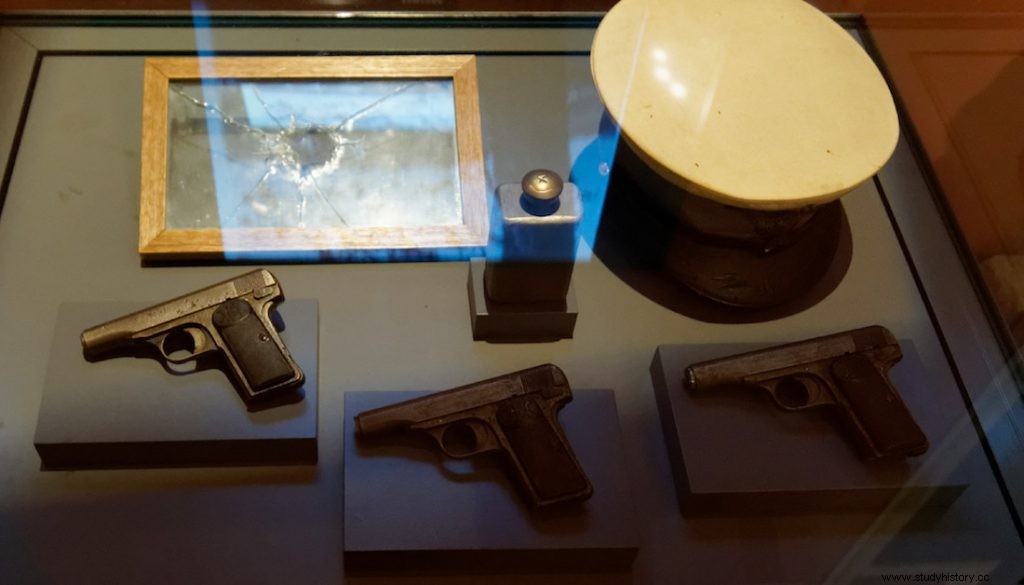
Browning M1910 pistol belonging to the Gavrilo Principa
assassinSarajevo bombing map
